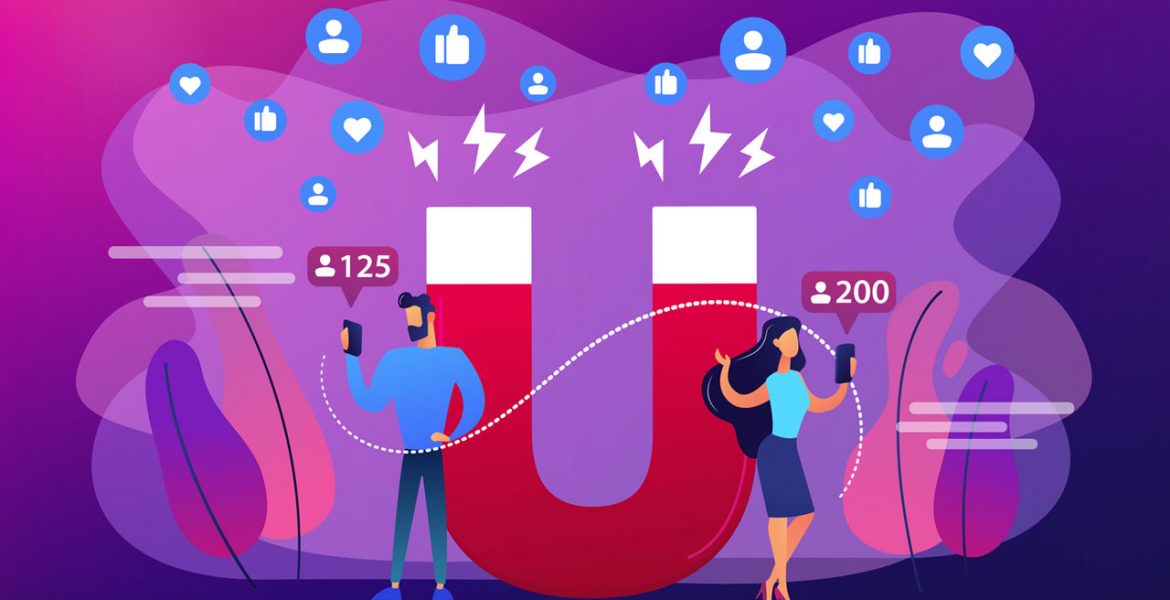The power of influencer marketing draws on credibility, trust, and access to a dedicated audience. The promise of influencer marketing is intimacy at scale. This article explores how influencers have nurtured the audiences marketers seek, built credibility with those audiences, and therefore earned the trust necessary to promote your brand in a way people will listen.
When most people join a social media platform, they sign up for an account, add their friends, family, and acquaintances, and pay little attention to growing their network. Some people take it a step further and reach out on an ad hoc basis to people in their extended network who may be able to help make an introduction, provide advice, or solve a problem.
Social media influencers take an entirely different approach. First, they look to establish their purpose and personal brand – who they are, what expertise or passion they have to share, and how they present that publicly. Next, they have to consistently provide value, whether that’s fabulous fashion, exotic destinations, loveable music, spot-on fitness advice, or witty social commentary.
Established credibility, earned trust
If they create a cohesive personal brand and consistently provide value through their content, influencers can establish a certain credibility. (This credibility is separate to the credibility of the influencer marketing industry at large, and would exist whether brand marketers use influencers for campaigns or not.) It is the credibility of a creator, which often relies on exceptional content, but always demands authenticity and consistency. In turn, established credibility tells social media users that they are genuine and someone worth following.
Over time, credibility evolves into trust – akin to that of a close friend or advisor. (And 78 percent of consumers trust recommendations from friends and family, compared with just 33 percent who trust brand advertisements.) In practice, for example, if a beauty influencer’s follower can see that they are insightful, fair, and balanced about beauty products on a consistent basis, and have mimicked a makeup tutorial from the influencer in a reasonably successful way, the next time the influencer recommends a product or publishes a new tutorial, prior experience encourages the follower to trust their advice.
Cultivated audiences
Just as a business has an addressable market, so too does an influencer. The potential size of their audience is based partly on the general popularity of the topic they cover. And thanks to the network effect of social media, if an influencer can establish credibility with and earn the trust of their followers, this can result in an exponentially growing audience.
But it’s important to note, marketers have learned that audience size is not the be-all and end-all of influencer marketing. In fact, the use of nano influencers (those with fewer than 10,000 followers) is a rising trend, and niche influencers who garner high engagement rates can be just as if not more valuable for an influencer marketing campaign than mega influencers. Having a large audience is one thing, but audience fit and affinity can provide the shortcut to engagement brand marketers seek.
And that’s the power of influencer marketing: ready-built audiences who trust an influencer based on the credibility they have established.
Intimacy at scale
As technology evolved in the 20th Century, marketers took advantage of the latest media to gain access to and the attention of potential customers. In their hayday, newspapers offered the chance to reach people’s doorsteps and breakfast tables, radio allowed marketers to reach people in their kitchens and cars, and television got marketers into people’s living rooms. For each new media type, the audience had a relatively limited number of options, and ads were interspersed but separate from the content. This combination allowed marketers to achieve intimacy with large audiences.
Then came the internet and email, both capable of reaching people at home and in the office. But the internet is a noisy place, and even if you get your messaging in front of people, ad blindness and ad blockers diminished the impact of digital advertising. Email is great for direct and personalized access, but saturation, spam filters, and the ability to unsubscribe foil all but the best email campaigns.
In the 21st Century, social media has become prevalent, occupying hours of people’s time every day of the week. Followers tune in to influencer content streams with the kind of regularity popular newspaper columnists, radio show hosts, or news anchors used to enjoy. Just as the traditional media channels that came before, social media influencers can get the attention of a broad audience and achieve intimacy at scale.
Intimacy at scale is the promise of influencer marketing. It’s what allows brands to build brand awareness, to educate audiences, and to strengthen bonds with consumers. Brands reportedly enjoy up to $18 in earned media value for every dollar they spend on influencer marketing – ultimately, intimacy at scale generates leads for your business.

